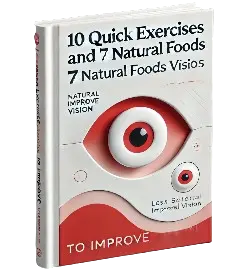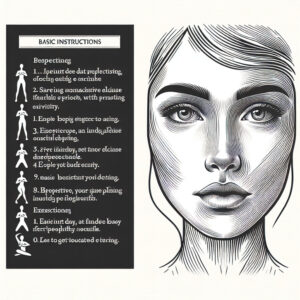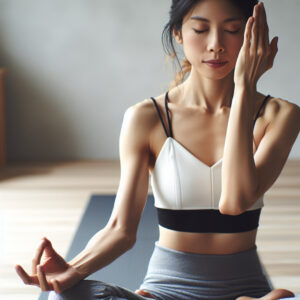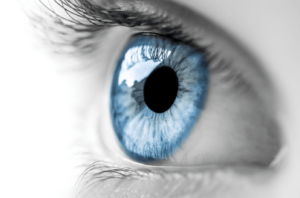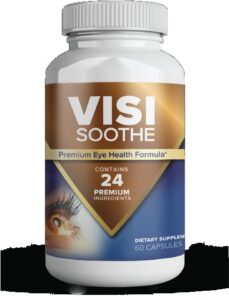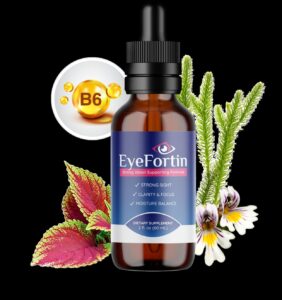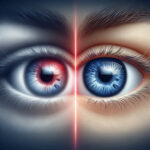Quick Fixes: How to Improve Near Eyesight in Just Minutes a Day
**Introduction: Why Near Vision Matters – And How You Can Make It Better**
These days, our eyes are constantly glued to screens, books, and up-close tasks. It’s no wonder so many of us struggle with near vision issues. Whether you’re squinting at a menu or struggling to read your phone, poor near vision can turn simple tasks into frustrating challenges.
The good news? There’s plenty you can do about it. From quick fixes that offer instant relief to long-term strategies for better eye health, this guide will show you how to take charge of your near vision and keep things clear – no magnifying glass required!
—
**Common Near Vision Struggles (And Why They Happen)**
If you’re over 40, chances are you’ve noticed it’s getting harder to focus on close-up objects. That’s presbyopia, a totally normal part of aging. And if you spend hours staring at screens each day? Yep, eye strain is probably making things worse.
Symptoms like blurry vision, headaches, and discomfort aren’t something to shrug off. They’re your body’s way of saying, “Hey, pay attention – I need some TLC!” So let’s dive into what you can do about it.
—
**Quick Fixes vs. Long-Term Solutions: Finding the Right Balance**
We all love a quick fix – who wouldn’t want instant relief from eye strain? But here’s the thing: those temporary solutions are only part of the equation. To really improve your near vision, you need to think long-term too.
Regular eye exams, healthy habits, and consistent care are the keys to sustainable improvement. So while that quick fix might feel like a lifesaver in the moment, don’t let it overshadow what’s truly needed for lasting change.
—
**Part 1: Easy Eye Exercises That Actually Work**
Ready to give your eyes a workout? Eye yoga is here to save the day! These simple exercises can help improve focus and reduce strain – no gym membership required.
Try alternating between near and far objects, rolling your eyes in smooth circles, or focusing on different distances. It’s like a mini vacation for your peepers.
**The 20-20-20 Rule: Your New Best Friend**
Here’s a tip that’s as easy as counting to 20 (three times). Every 20 minutes, take a break and look at something about 20 feet away for 20 seconds. It’s a small change, but trust us – your eyes will thank you.
**Focus Shifting: Sharper Vision in No Time**
Switching between close-up and distant objects might sound simple, but it works wonders. Hold up your finger and focus on it, then look at something across the room. Repeat this a few times a day, and watch as your focusing skills get sharper.
—
**Part 2: What You Eat Affects Your Eyes – Let’s Make It Good!**
Your diet plays a big role in how well you see up close. Think of these nutrients as superfoods for your eyes:
– **Spinach & Eggs:** Packed with lutein and zeaxanthin, these powerhouses protect against oxidative stress and keep your vision clear.
– **Omega-3s:** Found in fatty fish and flaxseeds, they’re like a natural lubricant for your eyes – no more dryness!
– **Hydration Station:** Water isn’t just for quenching thirst. It keeps those tear glands working overtime, so you stay comfortable all day long.
—
**Part 3: Lifestyle Changes That Support Better Vision**
Ready to make some changes that’ll have your eyes saying “thank you”? Let’s get started!
– **Screen Time Detox:** Give yourself a break from digital devices during non-work hours. Your eyes (and brain) will love it.
– **Lighting Matters:** Harsh or dim lighting can cause unnecessary strain. Opt for soft overhead lights and task lamps to create the perfect environment for reading and close work.
– **Quit Smoking & Cut Back on Alcohol:** We know – easier said than done. But here’s the thing: smoking and excessive alcohol consumption are bad news for eye health. Quitting smoking and moderating your drinking can make a huge difference.
—
**Part 4: Supplements That Can Help**
Supplements aren’t just a buzzword – they’re a game changer for eye health. Here’s what you need to know:
– **Vitamin A:** Essential for night vision, it’s found in foods like carrots and sweet potatoes (and yes, supplements work too!).
– **Zinc:** This mineral helps transport vitamin A to your eyes, keeping those retinas in tip-top shape.
– **Antioxidants:** They’re your eyes’ best defense against oxidative stress. Just remember – always check with a healthcare pro before starting anything new.
—
**Part 5: Quick Fixes You Can Try Right Now**
We get it – you want results yesterday! Here are some easy wins to try today:
– **Adjust Font Sizes:** Bigger text means less squinting, so don’t be afraid to tweak those settings.
– **Magnifying Glasses for Close Work:** Whether you’re sewing, reading, or tackling tiny print, these little helpers can make a big difference.
– **Warm Compresses:** Spend 10-15 minutes with a warm towel over your eyes. It’s like a spa day for your peepers – and it works wonders after long screen sessions.
—
**Part 6: Common Mistakes to Avoid**
Quick fixes are great, but they’re not the whole story. Here’s what you need to avoid:
– **Skipping Regular Eye Exams:** They might seem tedious, but these check-ups can catch issues early – saving you from bigger problems down the line.
– **Neglecting Consistency:** Improving your near vision isn’t a one-and-done deal. It takes effort over time. Think of it like a fitness routine for your eyes.
—
**Conclusion: Your Near Vision Journey Starts Today**
The truth is, taking care of your eyes requires patience and persistence. But the payoff? Clearer vision, less strain, and more confidence in your daily life.
So here’s the deal: start small, stay consistent, and don’t be afraid to mix things up along the way. Your future self (and your eyes) will thank you!
Now go out there and give those peepers the love they deserve!
How to Improve Near Eyesight at Any Age: A Comprehensive Guide
Understanding Near Eyesight: What You Need to Know
Near eyesight is all about how well you can see things up close—think reading a book or checking your phone. It’s super important because as we get older, our vision changes, and this can really affect our daily lives.
What is Near Eyesight?
Near eyesight, or near vision, lets us focus on tasks that require detail at close distances—usually within 18 inches. It’s all thanks to the eye’s crystalline lens, which changes shape to keep things in focus. Pretty cool, right?
Common Causes of Poor Near Vision
Poor near vision can happen for a few reasons:
- Aging: Presbyopia often kicks in after 40 as the lens loses its flexibility.
- Refractive Errors: Issues like myopia or hyperopia can mess with your near vision.
- Eye Strain: Spending too much time on screens can tire out your eyes and cause blurry vision.
When Should You Seek Help for Poor Near Vision?
If you’re struggling to focus on close objects, getting frequent headaches, or squinting a lot, it’s time to see an eye care pro. Early help can stop things from getting worse and keep your life in focus.
Lifestyle Changes to Improve Near Eyesight
The Role of Diet in Eye Health
What you eat really matters for your eyes. Load up on foods packed with antioxidants, vitamins A, C, and E, zinc, and omega-3s. Think leafy greens, carrots, fish, and nuts—your eyes will thank you!
Exercise and Its Impact on Vision
Regular exercise isn’t just for your body; it’s good for your eyes too. Activities like walking or yoga boost blood flow to the eyes, keeping them healthy without overworking them.
Managing Screen Time for Better Eye Health
Screens can be tough on the eyes. Try the 20-20-20 rule: every 20 minutes, look at something 20 feet away for 20 seconds. Also, adjust your screen brightness and use blue-light filters to ease the strain.
Eye Exercises: A Natural Way to Enhance Near Vision
Simple Eye Exercises You Can Do at Home
Giving your eyes a workout can help. Try these:
- Focusing: Switch between looking at something far away and something close, like your finger.
- Pencil Push-ups: Hold a pencil at arm’s length and slowly bring it toward your nose while focusing until things get blurry.
How Often Should You Practice These Exercises?
Shoot for about 10-15 minutes each day. Consistency is key, but don’t overdo it—your eyes need a break too!
Combining Eye Exercises with Other Techniques
Pair your eye exercises with good lighting and an ergonomic setup to make the most of them and cut down on strain during tasks like reading or screen time.
Medical Interventions: When to Seek Professional Help
Corrective Lenses and Their Benefits
Glasses or contacts can fix refractive errors. Reading glasses often work for presbyopia, while bifocals or progressive lenses tackle multiple vision issues at once.
Surgical Options for Improving Near Vision
Procedures like LASIK or lens replacement can restore near vision. But they’re usually recommended for folks with stable prescriptions and no other eye conditions.
Risks Associated with These Procedures
There are some risks, like dry eyes, glare, halos around lights, or trouble seeing at night. Chat with your surgeon to weigh the pros and cons.
Protecting Your Eyes from External Factors
The Importance of Sunglasses in Preventing UV Damage
Sunglasses aren’t just for style—they shield your eyes from harmful UV rays that can lead to cataracts or macular degeneration. Go for ones that offer 100% UV protection.
How Blue Light Affects Your Eyes and What You Can Do About It
Blue light from screens can mess with your sleep and cause eye strain. Use blue-light-blocking glasses or filters on devices to help out.
Creating an Eye-Friendly Environment at Work
Make your workspace kinder to your eyes by adjusting lighting, using anti-glare screens, and positioning your monitor slightly below eye level for comfort.
Using Magnification Tools to Enhance Near Vision
Types of Magnifying Glasses and Lenses
Magnifiers come in all shapes and sizes—hand-held, stand, or built-in. Pick one that fits your needs whether you’re reading or doing detailed work.
Digital Tools: Screen Readers and Zoom Features
Screen readers turn text into speech, while zoom features blow up content so it’s easier to read without squinting.
When to Consider Assistive Technology
If traditional methods aren’t cutting it, assistive tools can be a game-changer. They can make daily tasks easier and improve your quality of life if you have vision issues.
Maintaining Good Eye Health Over Time
The Role of Regular Eye Exams in Preventing Vision Loss
Regular eye exams are key to catching problems early. Adults should get checked every 1-2 years, especially those over 40 or with risk factors like diabetes.
Monitoring Changes in Your Vision and Reporting Symptoms
Keep an eye on any changes—blurry vision or trouble focusing—and mention them to your eye care provider right away. Early action can make a big difference.
Staying Informed About New Advances in Vision Care
Educate yourself about the latest in eye care through trustworthy sources. Knowing what’s out there helps you make smart decisions about your vision health.
Alternative Therapies: Exploring Holistic Approaches
How Acupuncture Might Help Improve Near Vision
Some folks say acupuncture can boost eye circulation and ease strain. While the evidence is still limited, it’s worth exploring under a pro’s guidance.
The Potential Benefits of Herbal Supplements for Eye Health
Supplements like lutein and zeaxanthin might support macular health. But always check with your doctor before starting anything new to avoid any issues.
Risks to Trying These Alternatives
Always talk to a professional before trying alternative therapies. Some may not work, and others could interfere with meds or existing conditions.
Improving near eyesight is all about mixing lifestyle tweaks, medical help, and regular care. By taking charge of your vision now, you can keep seeing clearly for years to come. Don’t forget to consult an eye care expert for advice tailored just for you!
Expert Advice: How to Improve Near Eyesight and Protect Your Vision
Understanding Near Eyesight: What You Need to Know
Near eyesight is all about how well you can focus on things right in front of you—like reading a book or scrolling through your phone. It’s super important for daily life, but here’s the thing: it can start to fade as you get older or due to other factors. Presbyopia, for instance, often pops up in middle age and makes it tough to see clearly without some help. The more you know about this stuff, the better equipped you’ll be to keep your vision sharp.
Lifestyle Changes to Improve Near Eyesight
What you eat plays a big role in how well your eyes work. Think of it like fuel for your body—load up on foods packed with antioxidants, like carrots and leafy greens, and you’re giving your retina the support it needs. Add some omega-3s from fish or flaxseeds to the mix, and you’re doing even more to keep age-related vision issues at bay. And don’t forget about exercise—it boosts blood flow to your eyes, which is a win-win. Staying hydrated? That keeps your eyes lubricated and comfy too.
Managing Screen Time for Better Vision
Digital screens are basically everywhere these days, but they can be tough on your eyes. Blue light, in particular, can mess with your sleep cycle and leave you feeling drained. Here’s how to fight back: adjust the brightness of your screen to match your surroundings and enable those blue light filters—trust me, your eyes will thank you. The 20-20-20 rule is another game-changer: every 20 minutes, look at something 20 feet away for 20 seconds. It’s a simple way to give your eye muscles a break. And don’t skimp on proper lighting in your workspace—good lighting and the right monitor height can make a world of difference.
Eye Exercises to Strengthen Your Vision
Yep, you can work out your eyes just like you do your body. One easy exercise is to focus on something close up, then switch your gaze to something farther away—repeat this a few times. It’s all about keeping those eye muscles flexible. Another trick? Palming: cup your hands over your eyes (without putting pressure on them) and let them relax for a bit. These little exercises can add up big-time when it comes to maintaining healthy vision.
The Role of Lighting in Protecting Your Vision
Proper lighting isn’t just about avoiding squinting—it’s about creating an environment that’s easy on your eyes. When you’re reading, make sure the light is coming from above or behind you to avoid harsh shadows. With screens, position lights so they don’t cause glare and adjust the brightness settings accordingly. Soft lighting sources are a great way to keep things comfortable during long sessions.
Protective Measures Against Eye Strain
Eye strain is no fun, but there are plenty of ways to combat it. Blue light filters or anti-glare screens on your devices can make a huge difference. Sunglasses with UV protection aren’t just for fashion—they’re a must-have when you’re out in the sun. And don’t forget about posture: keeping good alignment while using devices helps prevent unnecessary tension around your eyes and neck.
Preventative Care: Regular Check-ups and Screenings
Regular eye exams are the unsung heroes of vision care. They’re how you catch potential issues early on, like signs of presbyopia or other conditions that might need attention. Pair those check-ups with healthy habits—like eating right, staying active, and protecting your eyes from strain—and you’re setting yourself up for long-term vision success.
When to Seek Professional Help: Medical Treatments for Near Eyesight
If lifestyle changes aren’t cutting it when it comes to improving your near vision, it’s time to consider other options. Corrective lenses or surgery might be the way to go—think multifocal glasses or procedures like LASIK, which can address specific needs. But don’t wing it alone: consulting an eye care professional is key if you’re noticing persistent issues. They’ll give you tailored advice and make sure you’re on the right track.
All in all, taking these steps to protect and improve your near eyesight isn’t just about seeing clearly—it’s about feeling confident and comfortable in your daily life. So go ahead, incorporate these strategies into your routine, and keep those peepers in top shape!
A Comprehensive Guide on Enhancing Near Vision
Understanding Near Vision: A Basic Overview
Near vision is all about seeing things up close—like reading a book, threading a needle, or working on a detailed project. It’s something most of us take for granted until it starts to fade. And if you’re in your mid-40s or older, you’ve probably noticed that small print isn’t as easy to read as it used to be. That’s because of a natural age-related condition called presbyopia.
Presbyopia happens when the lens in your eye loses its flexibility, making it harder to focus on close-up objects. It’s not just about getting older—other factors can make things worse, like eating a diet lacking in key nutrients, working in low light, or staring at screens for hours on end. But the good news is that there are steps you can take to manage and even improve your near vision.
Let’s dive into how you can keep your eyes sharp as you age. From simple lifestyle changes to cutting-edge tech solutions, there’s a lot you can do to protect your sight.
How to Improve Near Eyesight Through Healthy Habits
Your diet is a game-changer for eye health. Load up on antioxidant-rich foods like leafy greens and colorful veggies—they’re packed with vitamins A and C, which are essential for healthy vision. And don’t forget the fish! The omega-3 fatty acids in salmon and other fatty fish can work wonders for your eyes.
Lighting is another key player. If you’re working on a task that requires close focus, make sure you’ve got enough light. Avoid harsh glare by using task lighting instead of overhead lights. It’s a small change that can make a big difference in reducing eye strain.
Ergonomic Adjustments for Reading and Close Work
Your workspace setup matters more than you might think. When it comes to computer screens, position them at eye level and about 18-24 inches away from your face. And invest in an adjustable chair—proper posture isn’t just good for your back; it’s also great for your eyes. After all, tension in your neck and shoulders can take a toll on your vision over time.
Reducing Screen Time and Digital Strain
Digital devices are a double-edged sword—they’re essential for modern life, but they also emit blue light that can tire out your eyes and mess with your sleep. To combat this, try the 20-20-20 rule: every 20 minutes, look away from your screen at something 20 feet away for 20 seconds. It’s a simple habit that can make a big difference. And if you’re really serious about reducing strain, consider grabbing a pair of blue-light filtering glasses—they’ll help you look like a tech-savvy pro while protecting your eyes!
Eye Exercises: A Proven Method to Boost Near Vision
Just like the rest of your body, your eyes need some TLC. Eye exercises are a great way to strengthen those muscles and improve focus. Try this one: pick an object that’s close to you, focus on it, then shift your gaze to something farther away. Repeat this a few times—it’s quick, easy, and surprisingly effective. Another cool trick is palming: sit in a dark room, cover your eyes with your palms (don’t press too hard!), and let the darkness relax your eyes for a minute or two. You’ll feel the tension melt away!
Medical Interventions: When Should You Seek Help?
If you’ve tried all the self-care tips and things still aren’t improving, it’s time to call in the pros. An eye care specialist can help determine if corrective lenses, reading glasses, or contacts are right for you. And if you’re looking for a more permanent solution, procedures like LASIK or lens replacement surgery might be options worth exploring. The key is to act early—don’t wait until your vision gets too blurry before seeking help.
How to Improve Near Eyesight with Technology
Tech has come to the rescue in more ways than one. Smart eyewear and adaptive lenses are game-changers, adjusting to different lighting conditions to keep things crystal clear. And if you’re a screen addict (who isn’t these days?), there are apps that can remind you to take breaks and track your screen time—no more guilt about binge-watching your favorite show!
Protecting Your Vision: Preventive Measures
Prevention is the name of the game when it comes to eye health. Schedule regular check-ups with your eye doctor every one to two years—it’s the best way to catch any potential issues early on. And don’t forget about UV protection! Sunglasses aren’t just for sunny days—they’re a must-have year-round to shield your eyes from harmful rays. Oh, and if you’ve got conditions like diabetes, managing them is crucial for preserving your vision in the long run.
How to Improve Near Eyesight in Older Adults
As we age, adapting to changing vision becomes part of life. For older adults, it’s all about making practical adjustments—like using reading aids or ensuring there’s plenty of lighting at home. And don’t underestimate the power of staying mentally and physically active. A healthy body often means healthier eyes!
Conclusion: Taking Charge of Your Near Vision Health
Improving near vision isn’t about one quick fix—it’s a holistic approach that involves diet, environment, technology, and knowing when to seek professional help. By making small changes now, you can keep your eyesight sharp and maintain your independence as you age. Remember, it’s never too late to start taking care of your eyes—your future self will thank you!
How to Strengthen Your Eyesight: Expert Tips for Near Vision Improvement
Introduction to Near Vision Improvement
Let’s face it—near vision is a big deal. Whether you’re reading a book, scrolling through your phone, or trying to decipher the tiny print on a menu, clear close-up vision makes life easier. But as we get older, things start to blur (literally!). It’s a common issue that comes with getting older, but there are ways to tackle it and keep your eyesight sharp. The good news? Small changes can make a world of difference.
Common Causes of Poor Near Vision
Poor near vision doesn’t just happen out of the blue—it’s often linked to age-related changes like presbyopia, which usually starts creeping in around your mid-40s. But it’s not all about aging; other factors come into play too. If you’re spending hours staring at screens or reading in dim lighting, you’re probably making things worse without even realizing it. And let’s not forget about lifestyle choices—like skipping breaks during long work sessions or eating a diet that’s lacking in eye-healthy nutrients. All of these little things add up over time.
Expert Tips for Improving Near Eyesight
So, what can you do to sharpen your near vision? Let’s dive into some proven strategies:
- Eye Exercises: Think of them as a workout for your eyes. The 20-20-20 rule is a great way to keep things in check—every 20 minutes, take 20 seconds to look at something 20 feet away. It’s simple, but it works!
- Nutrition: Your eyes deserve some TLC, and that starts with what you eat. Load up on foods rich in vitamins A, C, E, and zinc. Think carrots, oranges, nuts, and leafy greens.
- Tech Hacks: Cut down on screen time and invest in blue light filters. They’re a game-changer for reducing eye strain.
- Corrective Options: Don’t shy away from reading glasses or contacts if they help you see things more clearly.
Pro tip: Mix and match these strategies to find what works best for your lifestyle!
Monitoring Progress
So, how do you know if all this effort is paying off? Here are some signs to look out for:
- Your eyes feel less tired at the end of the day.
- You’re able to read smaller text without squinting or reaching for your glasses constantly.
- Overall, things just feel a bit sharper and easier on your eyes.
Remember, progress doesn’t happen overnight. It’s all about consistency and patience. Stick with it, and you’ll start noticing improvements over time.
When to Seek Professional Help
Now, here’s the deal: if things don’t seem to be getting better despite your best efforts—or if you notice sudden changes in your vision—it’s time to call in the experts. Sudden blurry vision, flashes of light, or new floaters in your field of view are red flags that need attention stat. Regular check-ups with an eye doctor are also a smart move—think of them as maintenance for your eyes!
Conclusion
Near vision improvement is all about taking small steps to make a big difference. Whether it’s tweaking your diet, cutting back on screen time, or investing in some good old-fashioned reading glasses, every little bit helps. The key? Stay consistent and don’t get discouraged if progress feels slow. Your eyesight is worth the effort!
Additional Resources
Looking for more ways to protect your vision? Check out blue light filters or try out brands like Readers Digest for reading glasses that offer a perfect fit. And if you’re curious about learning more, there’s plenty of resources out there on eye health—dig in!
Have any tips or tricks of your own? We’d love to hear them! Drop us a line in the comments below and let’s keep the conversation going.
How To Improve Near Eyesight Using Modern Techniques
Introduction to Near Eyesight
Imagine trying to read your favorite book or craft a detailed email, only to find yourself squinting just to make out the words. That’s where near eyesight comes in—your ability to see clearly at close distances, like right in front of you. Whether it’s reading a menu, working on your computer, or tying a shoelace, sharp near vision is essential for everyday life. But as we age or spend more time glued to screens, maintaining that clarity can become tricky.
Why does improving near eyesight matter? Well, clear vision up close isn’t just about convenience—it’s about safety, productivity, and overall happiness. After all, who wants to miss out on the finer details of life? In this post, we’ll dive into modern solutions for enhancing your near vision, from tried-and-true methods like glasses to lifestyle tweaks and even alternative therapies.
Understanding the Causes of Poor Near Vision
Poor near vision can come from a mix of biological and environmental factors. Two common culprits are presbyopia and astigmatism. Presbyopia, which often shows up as we age, makes it harder to focus on close-up objects because the eye’s lens becomes less flexible. Astigmatism, on the other hand, is due to an irregularly shaped cornea, leading to blurry vision at all distances.
Environmental factors also play a big role. Spending hours staring at screens, reading in dim lighting, or working in poorly designed spaces can take a toll on your eyes over time. The good news? Recognizing these causes is the first step toward fixing them.
Modern Techniques to Enhance Near Vision
Corrective Lenses: Eyeglasses and Bifocals
Eyeglasses are a classic solution for near vision issues. If you’re dealing with both close-up and distance problems, bifocal lenses might be your go-to. These lenses have two distinct optical powers in one pair of glasses—perfect for tackling presbyopia.
Contact Lenses for Improved Clarity
If glasses aren’t your thing, contact lenses are another fantastic option. They offer a wider field of vision than glasses and can correct both refractive errors like astigmatism and age-related issues like presbyopia. Just remember to keep them clean and replace them regularly!
Surgical Options: LASIK, PRK, and Lens Implantation
For those looking for a more permanent fix, surgery might be the way to go. Procedures like LASIK and PRK reshape the cornea to improve focus at close distances. Another option is lens implantation, where artificial lenses replace your natural ones, giving you clearer near vision without relying on glasses or contacts.
Lifestyle Changes to Support Better Near Vision
Diet for Eye Health: Vitamins A and C-Rich Foods
Your diet plays a huge role in keeping your eyes healthy. Load up on foods rich in vitamins A and C, along with antioxidants like lutein and zeaxanthin. Think carrots, spinach, citrus fruits, and nuts—these superfoods can help protect your eyes from oxidative stress and keep your vision sharp.
Exercise Your Eyes: Effective Eye Exercises
Your eyes might not be the first thing you think of when it comes to exercise, but they need a workout too! Simple techniques like the 20-20-20 rule (focusing on something 20 feet away for 20 seconds every 20 minutes) or eye-tracking exercises can help reduce strain and improve focus at close distances.
Reducing Screen Time and Digital Strain
In today’s digital age, protecting your eyes from screen time is crucial. Try using blue-light filtering glasses, adjusting your device settings to reduce glare, or taking regular breaks to rest your eyes. These small changes can make a big difference in preventing eye strain and keeping your vision clear.
Alternative Therapies for Improving Near Eyesight
Acupuncture as an Eye Health Therapy
While not everyone’s first thought, acupuncture has been explored as a complementary therapy for eye health. By targeting specific meridians linked to vision, it might help reduce strain and improve near vision clarity in some people.
Herbal Remedies and Supplements
Certain herbs and supplements are believed to support eye health and improve near vision. For example, bilberry extract is thought to strengthen capillaries around the eyes, while ginkgo biloba might enhance blood flow to the optic nerves. Always chat with a healthcare pro before trying these options.
Preventive Measures to Maintain Good Near Vision
Regular Eye Check-Ups: Early Detection is Key
Scheduling regular eye exams is one of the best ways to keep your near vision in tip-top shape. These check-ups can catch issues like presbyopia or astigmatism early, preventing them from turning into bigger problems down the line.
Proper Lighting When Reading or Working
Good lighting is essential for protecting your eyes when reading or working. Make sure you have enough light when focusing on close-up tasks. Avoid harsh overhead lights and opt for task-specific lighting instead to reduce strain.
Ergonomics in the Workplace: Reducing Eyestrain
Adjusting your workspace to promote good ergonomics can help ease eyestrain. Position your computer screen at eye level, use an ergonomic chair, and ensure your workstation is well-lit. These tweaks create a more comfortable environment for your eyes.
Conclusion: Achieving Clearer Vision with Modern Techniques
Improving near eyesight doesn’t have to be overwhelming. With the right mix of modern techniques, lifestyle changes, and preventive measures, you can enjoy clearer, sharper vision at close distances. Whether it’s through corrective lenses, surgery, or simple diet adjustments, there’s something out there for everyone.
Remember, consistency and patience are key. It might take some time to see results, but the effort is totally worth it for a better quality of life. So what can you do today? Take that first step toward clearer near vision—your eyes will thank you!
How to Improve Near Eyesight: Effective Techniques for Better Clarity
How to Improve Near Eyesight: Understanding the Basics
Near eyesight is all about how well you can see things up close—think reading a book, working on your computer, or even threading a needle. If you’re finding it tough to focus on these tasks, you might be wondering what’s causing this and how to tackle it. The truth is, there are plenty of reasons why near vision can become blurry. It could be due to age-related changes, like presbyopia, eye strain from staring at screens all day, or even underlying health issues. But here’s the good news: improving your near eyesight isn’t just possible—it can also make a huge difference in your daily life and overall happiness.
How to Improve Near Eyesight with Eye Exercises
Eye exercises are like workouts for your peepers, helping you strengthen your focus and see things more clearly. One of the easiest ways to get started is by following the 20-20-20 rule. Here’s how it works: every 20 minutes you spend staring at a screen, take a break and look at something about 20 feet away for 20 seconds. It’s simple but effective. Another fun exercise is palming. All you need to do is sit in a dark room, cover your eyes with your palms (but don’t press too hard!), and relax for a few minutes. It might sound weird, but it can work wonders for relieving eye strain. And if you’re up for something more active, try focusing drills. Alternate between looking at something close up and then something farther away. Over time, this can help improve your ability to switch focus smoothly.
How to Improve Near Eyesight Through Diet and Nutrition
Your diet isn’t just fuel for your body—it’s also a powerful tool for keeping your eyes healthy. If you want sharper near vision, load up on foods packed with antioxidants. Think leafy greens like spinach or kale, bright orange veggies like carrots, and berries of all kinds. These foods are loaded with vitamins A, C, and E, which are all rockstars when it comes to eye health. Oh, and don’t forget about zinc—it’s another key player that helps protect your vision. Staying hydrated is just as important. Dry eyes can make everything feel fuzzy, so keep a water bottle handy and give those peepers the moisture they need.
How to Improve Near Eyesight with Corrective Measures
If eye exercises and diet aren’t giving you the results you’re hoping for, it might be time to look into corrective measures. Glasses or contact lenses are a great starting point. A quick trip to the optometrist can give you the perfect prescription to make everything up close crystal clear again. And if your vision issues are more severe, there are surgical options like LASIK that could be worth considering. But before jumping into anything drastic, remember—there’s no rush. Take your time and explore all your options with the help of a professional.
How to Improve Near Eyesight Using Technology and Tools
In today’s digital age, technology isn’t just for making life easier—it can also be a game-changer for your near vision. If you spend hours staring at screens, invest in some blue light filters. They’ll help cut down on the strain those screens put on your eyes. Adjustable lighting is another must-have. Whether you’re reading or working on a project, having the right kind of light can make all the difference. And for those days when even glasses aren’t enough, consider picking up some magnifying aids. They might seem old-school, but they’re perfect for tasks like threading needles or deciphering tiny text.
How to Improve Near Eyesight by Managing Screen Time
If you’re like most people, screens are a big part of your day—whether it’s scrolling through social media, working on your laptop, or binge-watching your favorite show. But all that screen time can take a toll on your eyes. The good news? There are plenty of ways to manage it without totally cutting yourself off from the digital world. Start by setting some limits. Decide how much time you’ll spend in front of screens each day and stick to it. And when you’re using devices, don’t forget about anti-glare screens or filters—they can make a huge difference in reducing strain. Finally, play around with your display settings. Lowering the brightness and boosting the contrast can create a much more eye-friendly environment.
How to Improve Near Eyesight with Professional Help
If you’ve tried all the self-help stuff and still aren’t seeing results, it might be time to call in the pros. Eye care specialists are experts at figuring out what’s going on and how to fix it. They’ll run some tests—like refraction or retinoscopy—to get a clear picture of your vision needs. And once they’ve got all the details, they can put together a customized plan that’s tailored just for you. Whether it’s a new pair of glasses, contact lenses, or even surgery, they’ll guide you toward the solution that makes the most sense for your situation.
How to Improve Near Eyesight: Prevention Tips for Long-Term Clarity
If you want to keep those up-close tasks from getting blurry again in the future, prevention is key. Start by taking regular breaks when doing anything that requires sustained focus—whether it’s reading, working on a computer, or crafting. Your eyes need time to rest and recover just like any other part of your body. And don’t forget about posture—it might seem unrelated, but poor positioning can lead to unnecessary strain. Finally, protect those peepers from the elements. UV rays aren’t just bad for your skin—they’re also rough on your eyes. So grab some sunglasses when you head out and keep an umbrella handy if you’re dealing with dust or wind.
How to Prevent Further Decline in Near Eyesight and Keep Your Vision Sharp
Introduction to Near Eyesight and Its Importance
Near eyesight, or close vision, is our ability to see clearly within 18 inches—like reading a book or scrolling through your phone. It’s essential for everyday tasks, but as we age, especially after 40, many notice their near vision starts to blur. That’s called presbyopia, and it’s totally normal. But don’t let it hold you back! Taking care of your eyes now can keep them sharp and help you stay independent, safe, and enjoy life to the fullest.
Common Causes of Vision Decline in Adults
Your vision can take a hit for a bunch of reasons—age-related changes like presbyopia, staring at screens all day, or even health issues like diabetes. Plus, environmental factors like UV rays and blue light can make things worse over time. The good news? Spotting these culprits early can help you tackle them before they become a big problem.
Why Preventing Further Decline Matters
Maintaining your near eyesight isn’t just about reading tiny print—it’s about staying safe and living life on your terms. Struggling to see small details can lead to accidents, like misreading medication labels or tripping over something you didn’t notice. By taking care of your vision now, you’re ensuring you stay active, enjoy your hobbies, and keep doing all the things that make life worth living.
Understanding the Basics of Eye Health
The Anatomy of the Eye and How It Affects Vision
Your eyes are like a high-tech camera, with parts like the cornea, lens, retina, and optic nerve all working together to turn light into images your brain can understand. The cornea and lens focus light onto the retina, which converts it into electrical signals sent to your brain via the optic nerve. Any hiccup in that process can make things blurry, which is why regular eye care is so important.
Age-Related Factors That Impact Near Vision
Presbyopia happens when the lens in your eye gets thicker and less flexible over time, making it harder to focus on close-up objects. It’s a natural part of aging, which is why so many folks over 40 end up with reading glasses. But knowing what’s happening can help you adapt and keep things under control.
Myths About Near Vision Loss Debunked
Let’s clear the air—reading in dim light won’t give you myopia, though it can strain your eyes a bit. And while screens are everywhere, they don’t permanently damage your vision (though they do contribute to digital eye strain). The truth is, some things are unavoidable as we age, but adopting healthy habits can go a long way in protecting your sight.
Simple Lifestyle Modifications to Protect Your Vision
Incorporating Regular Breaks During Screen Time
Digital devices emit blue light, which can tire out your eyes over time. That’s where the 20-20-20 rule comes in—every 20 minutes, look at something 20 feet away for 20 seconds. It’s a simple trick that helps reduce strain and keeps your eyes feeling fresh throughout the day.
Maintaining Proper Lighting for Reading and Work
Good lighting is key when you’re reading or working on screens. Use task lights to avoid harsh shadows, and adjust your screen brightness to match the light in the room. It might seem small, but it can make a big difference in reducing eye fatigue.
Reducing Strain Through Ergonomic Adjustments
Your workspace setup matters for your eyes too! Position your monitor at eye level to avoid neck strain and keep it about 20-25 inches away. Proper ergonomics not only reduces discomfort but also helps you stay focused and productive.
The Role of Diet in Improving Near Eyesight
Nutrients That Support Eye Health
Your diet plays a big role in eye health. Antioxidants like vitamins A, C, E, and zinc are your eyes’ best friends. Omega-3 fatty acids are crucial for retinal function, while lutein and zeaxanthin act as natural sunglasses, protecting your eyes from harmful light rays.
Foods to Include for Better Vision
Load up on leafy greens like spinach and kale (packed with lutein), citrus fruits for vitamin C, nuts for vitamin E, fatty fish like salmon for omega-3s, eggs for zeaxanthin, carrots for beta-carotene, and colorful veggies for antioxidants. These foods are like a multivitamin for your eyes!
Avoiding Harmful Dietary Habits That Affect Sight
Too much sugar and processed foods can lead to health issues like diabetes, which can also affect your vision. Keep these to a minimum to protect not just your eyes but your overall health too.
Effective Exercises to Strengthen Your Eye Muscles
Eyegazing Exercises You Can Do at Home
Spend 10-15 minutes each day on exercises like palming (cover your eyes with your palms for a few minutes to relax them) and eye rolling. Focus drills—shifting between near and far objects—can also help keep your eye muscles strong and flexible.
How to Practice the 20-20-20 Rule
Next time you’re glued to a screen, remember this: every 20 minutes, pause, look at something 20 feet away for 20 seconds. It’s an easy way to give your eyes a break and keep them feeling comfortable all day long.
Incorporating Focus Drills into Your Routine
Try this: switch between looking at a distant object and the tip of your nose. Do it for 10-15 minutes daily, and you’ll not only strengthen your eye muscles but also improve their flexibility, helping you maintain clear vision across all distances.
Protecting Your Eyes from Environmental Harm
The Impact of Blue Light and How to Mitigate It
Blue light exposure—especially in the evening—can mess with your sleep. Use blue light filters or apps on your devices, invest in anti-blue light glasses, and try to limit screen time before bed. Your eyes (and your sleep) will thank you.
Sunglasses: More Than Just a Fashion Statement
Quality sunglasses aren’t just for looking cool—they’re essential for protecting your eyes from harmful UV rays. They reduce the risk of conditions like cataracts and keep your eyes healthy as you age. Plus, they add a little flair to any outfit!
Reducing Exposure to Dust and Other Irritants
Avoid dusty environments whenever possible, and don’t forget your protective eyewear when necessary. Keep your living space clean with regular dusting and vacuuming to minimize irritants in the air. Your eyes will feel happier and healthier because of it.
When to Seek Professional Help for Vision Problems
Recognizing the Signs of Severe Vision Decline
If you notice sudden changes in vision, have trouble focusing on close objects, or experience frequent headaches despite taking preventive measures, it’s time to see an eye care professional. Early intervention can make a world of difference.
Common Tests Conducted by Eye Care Professionals
Eye exams usually include tests like refraction (to figure out your lens prescription), slit-lamp exams for checking the health of your eyes, and visual acuity tests to measure how clearly you see at different distances. These assessments help catch issues early and guide treatment decisions.
Advanced Treatments Available for Near Vision Loss
Treatments range from corrective lenses like reading glasses or contact lenses to more advanced options like LASIK surgery or lens replacements. Talk to your eye care provider about which option makes the most sense for you based on your specific needs and circumstances.
Conclusion: A Comprehensive Approach to Preserving Your Vision
Recap of Key Tips for Maintaining Sharp Near Eyesight
To keep your near eyesight sharp, remember to take regular breaks, use proper lighting, make ergonomic adjustments, eat a balanced diet rich in eye-healthy nutrients, practice eye exercises, and protect your eyes from environmental hazards. These steps form the foundation of a comprehensive vision care plan.
Encouraging Regular Eye Exams and Check-Ups
Don’t skip those annual eye exams! They’re your chance to catch any issues early on and take action before they become bigger problems. It’s a simple way to ensure your eyes stay healthy and your vision stays clear for years to come.
Final Thoughts on Protecting Your Vision for the Future
Your eyes are a precious resource, and taking care of them is an investment in your future. By making these strategies part of your daily life, you’re not only preserving your vision but also enhancing your quality of life. So go ahead—read that book, tackle those puzzles, or just enjoy the little things that make life vibrant. Your eyes deserve it!
Introduction to Near Eyesight and Its Importance
Near eyesight, often called close vision, is all about seeing clearly within 18 inches. It’s crucial for everyday tasks like reading, crafting, or scrolling through your phone. As we hit our 40s, many of us start noticing that our near vision isn’t what it used to be—a natural change known as presbyopia. While it’s part of aging, there are plenty of ways to keep your vision sharp and prevent further decline. After all, good eyesight means independence, safety, and enjoying life to the fullest.
Common Causes of Vision Decline in Adults
Your vision can take a hit for a bunch of reasons—aging changes like presbyopia, digital eye strain from too much screen time, or even health issues such as diabetes. Environmental factors also play a role; think harmful UV rays and blue light that can worsen vision over time. Spotting these causes is the first step toward preventing bigger problems down the line.
Why Preventing Further Decline Matters
Maintaining good near eyesight isn’t just about reading clearly—it’s about staying safe and independent. Struggling to see small print or focus on close tasks can lead to accidents, like mixing up medication dosages. By taking proactive steps, you ensure you stay active, enjoy your hobbies, and live life to the fullest as you age.
Understanding the Basics of Eye Health
The Anatomy of the Eye and How It Affects Vision
Your eyes are like a精密的机器,with parts like the cornea, lens, retina, and optic nerve working together to turn light into images. The cornea and lens focus light onto the retina, which then converts it into electrical signals sent to your brain via the optic nerve. Any hiccup in this process can affect how clearly you see, which is why regular eye care is so vital.
Age-Related Factors That Impact Near Vision
Presbyopia happens because the lens inside your eye becomes thicker and less flexible over time, making it harder to focus on close objects. It’s a natural part of aging, which is why many folks over 40 reach for reading glasses. Understanding these changes can help you adapt and manage them effectively.
Myths About Near Vision Loss Debunked
Let’s set the record straight—reading in dim light doesn’t cause myopia, though it can strain your eyes. Staring at screens won’t permanently weaken your vision, but it can contribute to digital eye strain. While some aspects of vision loss are unavoidable, there are plenty of healthy habits you can adopt to protect your eyesight.
Simple Lifestyle Modifications to Protect Your Vision
Incorporating Regular Breaks During Screen Time
Digital devices emit blue light, which can tire out your eyes. The 20-20-20 rule is a simple way to reduce strain—every 20 minutes, take a break and look at something 20 feet away for 20 seconds. It’s like giving your eyes a mini vacation throughout the day.
Maintaining Proper Lighting for Reading and Work
Good lighting is key when reading or working on screens. Use task lights to avoid shadows and adjust your screen brightness to match the ambient light. This helps reduce eye fatigue without causing harsh glare.
Reducing Strain Through Ergonomic Adjustments
Your workspace setup matters for your eyes. Position your monitor at eye level and keep it about 20-25 inches away from you. Proper ergonomics reduces neck strain and keeps your eyes comfortable, which is a win-win for productivity and eye health.
The Role of Diet in Improving Near Eyesight
Nutrients That Support Eye Health
A diet rich in antioxidants like vitamins A, C, E, and zinc does wonders for your eyes. Omega-3 fatty acids are crucial for retinal function, while lutein and zeaxanthin act as natural sunglasses, protecting against harmful light rays.
Foods to Include for Better Vision
Load up on foods like spinach and kale for their lutein content, citrus fruits for vitamin C, nuts for vitamin E, fatty fish like salmon for omega-3s, eggs for zeaxanthin, carrots for beta-carotene, and colorful veggies for antioxidants. These foods are your eyes’ best friends.
Avoiding Harmful Dietary Habits That Affect Sight
Diets high in sugar and processed foods can lead to health issues like diabetes, which can impact vision. Keep these treats to a minimum to protect not just your eyes but your overall health too.
Effective Exercises to Strengthen Your Eye Muscles
Eyegazing Exercises You Can Do at Home
Spend 10-15 minutes daily on exercises like palming, where you cover your eyes with your palms for a few minutes to relax them. Eye rolling and focus drills—shifting focus between near and far objects—also help strengthen eye muscles and improve flexibility.
How to Practice the 20-20-20 Rule
During screen time, remember to take regular breaks. Every 20 minutes, pause, look at something 20 feet away for 20 seconds. It’s a simple practice that goes a long way in reducing strain and keeping your eyes comfortable throughout the day.
Incorporating Focus Drills into Your Routine
Practice focus drills by switching between looking at a distant object and something close, like the tip of your nose. Do this for 10-15 minutes daily to boost flexibility and maintain clear vision across distances.
Protecting Your Eyes from Environmental Harm
The Impact of Blue Light and How to Mitigate It
Blue light exposure, especially in the evening, can mess with your sleep. Use blue light filters or apps on devices, invest in anti-blue light glasses, and cut back on screen time before bed. Your eyes (and your sleep) will thank you.
Sunglasses: More Than Just a Fashion Statement
Quality sunglasses with UV protection are essential for outdoor activities. They shield your eyes from harmful rays and reduce the risk of conditions like cataracts, all while keeping you stylish.
Reducing Exposure to Dust and Other Irritants
Avoid dusty environments and use protective eyewear when necessary. Keep your living space clean with regular dusting and
Quick Fixes for How to Improve Near Eyesight: What You Need to Know
Quick Fixes for How to Improve Near Eyesight: What You Need to Know
Understanding Near Eyesight: What You Need to Know
What is Near Eyesight?
Hey there, let’s talk about near eyesight—also known as near vision. Simply put, it’s your ability to see things clearly when they’re right in front of you. Whether you’re reading a book, working on your laptop, or trying to thread a needle, near vision is the star of the show. It’s what helps you navigate those tiny details that make life so much more enjoyable.
Common Causes of Poor Near Vision
Now, why might your near vision be acting up? Well, one big culprit is presbyopia—a fancy word for the natural aging of your eyes. It usually creeps in around your mid-40s and makes it harder to focus on close-up stuff. Other culprits include refractive errors like hyperopia (farsightedness) or astigmatism. And let’s not forget about eye strain from staring at screens all day or trying to read in dim lighting. It’s a recipe for blurry vision!
Why Improving Near Eyesight Matters
Your near eyesight isn’t just a luxury—it’s a necessity. Imagine struggling to read a menu, lose your place while reading a book, or even something as simple as tying your shoes. It’s frustrating and can really dampen your confidence. The truth is, good near vision makes life easier and more enjoyable—so why not fight for it?
Quick Fixes for How to Improve Near Eyesight
Lifestyle Changes to Enhance Near Vision
Here’s the deal: small tweaks in your daily routine can make a big difference. For starters, ensure you’re reading or working in well-lit areas. Bright lighting helps reduce eye strain and makes it easier to see clearly. And hey, if you spend hours glued to screens, take regular breaks. The 20-20-20 rule is your new best friend: every 20 minutes, look at something 20 feet away for 20 seconds. Trust me, your eyes will thank you.
Diet and Nutrition Tips for Better Eyesight
Your diet isn’t just about what’s on the scale—it’s also about what’s in your eyes. Load up on foods packed with antioxidants like leafy greens, carrots, and citrus fruits. These little powerhouses help protect your eyes from damage and keep things sharp. Oh, and don’t forget omega-3s found in fish and nuts—they’re like a superhero team for your eye health. Staying hydrated is another key player; dry eyes can make everything feel blurry, so keep that water bottle handy!
Eye Exercises to Strengthen Your Vision
Eyes need exercise too! Here’s a fun little trick: hold an object at arm’s length and slowly bring it closer while trying to focus. It helps your eyes adjust better when switching between near and far objects. And remember, the 20-20-20 rule isn’t just for breaks—it’s also a great way to keep things clear and reduce strain.
Preventing Further Decline in Near Eyesight
Avoiding Activities That Strain Your Eyes
If you want to keep your near vision strong, avoid overloading your eyes. Prolonged reading or screen time without breaks is a no-go. If screens are part of your daily life, consider using blue light filters or tweaking brightness settings to ease the strain.
Protecting Your Eyes from Harmful UV Rays
UV rays aren’t just bad for your skin—they’re also a threat to your eyes. Always grab those sunglasses with UV protection before heading out, even on cloudy days. It’s a simple step that can save your vision in the long run.
Reducing Screen Time and Digital Eye Strain
In our digital world, screens are everywhere—but they don’t have to ruin your eyesight. Keep your devices at arm’s length, bump up the font size for readability, and consider anti-glare screens or glasses designed for computer use. And hey, take those breaks! Your eyes will love you for it.
Expert Recommendations for How to Improve Near Eyesight
When to See an Optometrist
If your near vision struggles are more than just a minor annoyance, it’s time to seek professional help. An optometrist can spot any underlying issues and suggest the best course of action. Don’t wait—regular check-ups are key to keeping your eyes in top shape.
Understanding Prescriptions for Reading Glasses
If reading glasses are part of your future, don’t stress! They’re designed to correct specific issues causing blurry close-up vision. Understanding your prescription is like having a roadmap to clearer vision—so take the time to get it right.
Exploring Advanced Options Like Surgery or LASIK
If you’re ready for a more permanent fix, laser surgery like LASIK could be the answer. It can correct certain refractive errors and reduce your reliance on glasses or contacts. But before diving in, chat with your eye care pro to weigh the pros and cons.
Conclusion: Taking Charge of Your Near Vision
Recap of Key Tips for Improving Near Eyesight
So, what’s the bottom line? Boosting your near vision is all about balance—mix in lifestyle tweaks, load up on eye-friendly foods, and don’t shy away from expert help when needed. Protect your eyes from strain and UV damage, and you’re well on your way to sharper, clearer vision.
Encouraging a Proactive Approach to Eye Health
Your near vision is a gift worth protecting. By taking small steps today, you can enjoy the little things tomorrow—like reading that book, threading that needle, or simply soaking in the details of life. Remember, regular check-ups and seeking advice when needed are your best allies in maintaining healthy eyesight.
How to Combine Exercise and Diet for Better Near Vision
Introduction: Understanding the Importance of Combining Exercise and Diet for Near Vision
Near vision is essential for everyday tasks like reading, scrolling through your phone, or working on hobbies that require precision. But as we get older—or due to other factors—many folks find their close-up eyesight starts to fade. While glasses or contacts are common fixes, more people are exploring natural ways to boost near vision, and it turns out diet and exercise might be the key.
Here’s a little secret: your eyes need proper fuel just like any other part of your body. Imagine them as high-performance engines—without the right nutrients or circulation, they can’t run at peak efficiency. In this post, we’re diving into how pairing a balanced diet with regular exercise can help you see clearer up close.
Why Both Diet and Exercise Matter for Eye Health
Your eyes are complex little machines that need a steady stream of nutrients to keep working smoothly. Without the right mix of vitamins, minerals, and antioxidants, they’re more susceptible to age-related issues like presbyopia or even serious conditions such as macular degeneration. But here’s where exercise comes in: it boosts blood flow, delivering those crucial nutrients directly to your peepers.
The Role of Nutrition in Supporting Eye Function
Nutrition is the foundation of healthy eyes. Vitamins A, C, E, and minerals like zinc, copper, and selenium are game-changers for eye health. They protect against oxidative stress—the silent enemy that can damage your vision over time—and keep those free radicals in check.
How Physical Activity Enhances Blood Flow to the Eyes
Exercise isn’t just about building muscles or burning calories—it’s also a win for your eyes. By getting your heart rate up, you’re improving circulation, which means more oxygen and nutrients are flowing to your eyes. This can help with focus and reduce eye strain from hours spent staring at screens.
Part 1: The Role of Diet in Improving Near Eyesight
Key Nutrients for Eye Health: Vitamin A, C, and E
Vitamins A, C, and E are the heavy hitters when it comes to eye health. Vitamin A keeps your cornea healthy and aids in low-light vision. Citrus fruits, bell peppers, and leafy greens pack a punch of Vitamin C, which strengthens capillaries in the eyes. And Vitamin E? Think of it as nature’s antioxidant superhero, protecting against free radical damage.
Minerals That Support Vision: Zinc, Copper, and Selenium
Zinc, copper, and selenium work together like a well-oiled machine to keep your vision sharp. Zinc helps transport Vitamin A from your liver to your eyes, while copper is essential for producing melanin—a pigment that acts as UV protection for your eyes. Selenium? Another antioxidant powerhouse that shields the lens and retina.
Antioxidants and Their Impact on Near Vision
Antioxidants are like superheroes for your eyes, fighting off oxidative stress that can lead to vision problems over time. Think berries, nuts, seeds, and even dark chocolate—these foods are packed with antioxidants that can make a real difference in your near vision.
Foods to Incorporate: Leafy Greens, Berries, and Fatty Fish
Your plate should be a colorful mix of nutrient-rich foods like spinach, kale, blueberries, strawberries, and fatty fish such as salmon or mackerel. These foods are loaded with vitamins, minerals, and antioxidants that support eye health. Swap out sugary snacks for these healthier options—your eyes will thank you!
Part 2: The Importance of Exercise in Enhancing Near Eyesight
How Physical Activity Improves Blood Circulation to the Eyes
Regular exercise gets your blood pumping, which is a huge win for your eyes. Improved circulation means more oxygen and nutrients are reaching your peepers, helping with focus and reducing strain from prolonged screen time.
Eye Yoga and Its Benefits for Focusing Ability
Eye yoga might sound quirky, but it’s a fun way to strengthen your eye muscles. Simple exercises like rolling your eyes, shifting focus between near and far objects, or tracing the alphabet with your eyes can help keep your vision sharp and reduce strain.
How Physical Activity Improves Blood Circulation to the Eyes
Regular exercise gets your blood pumping, which is a huge win for your eyes. Improved circulation means more oxygen and nutrients are reaching your peepers, helping with focus and reducing strain from prolonged screen time.
How Physical Activity Improves Blood Circulation to the Eyes
Regular exercise gets your blood pumping, which is a huge win for your eyes. Improved circulation means more oxygen and nutrients are reaching your peepers, helping with focus and reducing strain from prolonged screen time.
Part 3: Combining Diet and Exercise for Optimal Results
Creating a Balanced Meal Plan That Supports Eye Health
A balanced diet rich in colorful fruits, leafy greens, and omega-3 fatty acids is key to supporting eye health. Plan meals that include a variety of these nutrient-dense foods to ensure you’re getting all the vitamins and minerals your eyes need.
How Regular Physical Activity Complements Nutritional Efforts
While diet provides the essential nutrients, exercise helps transport them effectively to your eyes. By combining both, you create a powerful synergy that supports optimal eye health and improves near vision over time.
Sample Daily Routines That Integrate Both Aspects
A typical day might include a morning smoothie with spinach and berries for nutrients, followed by a brisk walk to get your blood flowing. Pair this with healthy meals throughout the day and some eye yoga exercises in the evening to round out your routine.
Monitoring Progress and Adjusting Your Approach
It’s important to track your progress over time. If you’re not seeing the desired results, consider adjusting your diet or exercise routine. A little tweak here and there can make a big difference in achieving your vision goals.
Part 4: Lifestyle Tips to Enhance Near Vision Improvement
Staying Hydrated for Optimal Eye Function
Dehydration can lead to dry eyes and discomfort. Make sure to drink plenty of water throughout the day to keep your eyes lubricated and functioning properly.
Avoiding Smoking and Minimizing Alcohol Consumption
Smoking and excessive alcohol consumption are harmful to eye health. Quitting smoking and moderating your alcohol intake can go a long way in protecting your near vision.
Ensuring Adequate Sleep for Eye Health
Quality sleep is essential for overall health, including your eyes. Aim for 7-8 hours of restful sleep each night to allow your eyes to recover and maintain optimal function.
Managing Screen Time to Protect Your Eyesight
Excessive screen time can strain your eyes and contribute to near vision problems. Take regular breaks, use blue light filters, and follow the 20-20-20 rule (every 20 minutes, look at something 20 feet away for 20 seconds) to reduce eye strain.
Part 5: Addressing Common Concerns About Improving Near Eyesight
Can Diet Alone Improve Vision, or Is Exercise Essential?
While diet provides the necessary nutrients, exercise enhances blood flow and helps deliver those nutrients to your eyes. For optimal results, both diet and exercise should work hand in hand.
How Long Does It Take to See Results from a Combined Approach?
Results can vary depending on individual factors like age and the severity of vision decline. However, many people notice improvements within a few weeks to months with consistent effort.
What If I Don’t Notice Improvement Despite Changes in Diet and Exercise?
If you’re not seeing results, it’s important to consult with an eye care professional. They can help identify any underlying issues and provide additional guidance tailored to your needs.
Are There Any Risks Associated with Over-exercising for Eye Health?
While exercise is beneficial, overexertion can lead to temporary vision changes or eye strain. It’s important to find a balance and listen to your body to avoid any negative effects.
Conclusion: Taking Charge of Your Near Vision
Recap of Key Strategies: Diet, Exercise, and Lifestyle Adjustments
In summary, improving near vision involves a holistic approach that combines proper nutrition, regular exercise, and healthy lifestyle choices. By making these changes, you can support your eye health and enjoy sharper focus for years to come.
Encouragement to Start Small and Stay Consistent
If you’re feeling overwhelmed, remember that small steps lead to big results. Start by incorporating one or two healthy habits into your routine and gradually build from there. Consistency is key when it comes to improving your near eyesight.
Final Thoughts on the Synergy Between Physical Activity and Nutrition
The synergy between diet and exercise is powerful, creating a winning combination for your eye health. By nourishing your body with the right foods and keeping it active, you’re setting yourself up for success in maintaining sharp near vision.
Next Steps: Implementing These Tips into Your Daily Routine
The best way to see results is to start implementing these tips today. Begin with a balanced diet rich in eye-boosting nutrients, incorporate regular exercise, and make healthy lifestyle choices a priority. With time and dedication, you can take charge of your near vision and enjoy all the little details life has to offer.
Here is the rewritten content with a more natural and conversational tone:
—
Introduction: Understanding the Importance of Combining Exercise and Diet for Near Vision
Near vision is super important in our daily lives—it’s what lets us read, use our phones, or enjoy hobbies that require close focus. But as we age, or due to other factors, many of us notice a decline in how clearly we can see up close. While glasses or contacts are common fixes, more people are exploring natural ways to improve near vision through diet and exercise.
Your eyes need proper nutrition and blood flow to work their best. Think of it like this: just as your car needs fuel, your eyes need the right nutrients and good circulation to keep things sharp. In this blog post, we’ll dive into how combining a balanced diet with regular exercise can naturally enhance your near vision.
Why Both Diet and Exercise Matter for Eye Health
Your eyes are complex organs that rely on a steady supply of nutrients to stay healthy. Without the right vitamins, minerals, and antioxidants, they can become more susceptible to issues like presbyopia or even serious conditions such as macular degeneration. On the flip side, physical activity is key for maintaining healthy blood flow, which delivers those essential nutrients to your eyes.
The Role of Nutrition in Supporting Eye Function
Nutrition forms the foundation of good eye health. Vitamins A, C, E, along with minerals like zinc, copper, and selenium, are all heroes when it comes to protecting against oxidative stress that can harm your eyes over time. Antioxidants, in particular, are like superheroes, neutralizing harmful free radicals and keeping your vision clear.
How Physical Activity Enhances Blood Flow to the Eyes
Exercise isn’t just about getting fit—it’s also great for your eyes! By boosting blood circulation, physical activity ensures your eyes get a steady supply of oxygen and nutrients. This improved flow can help with focus and reduce eye strain from long hours on screens or other close-up tasks.
Part 1: The Role of Diet in Improving Near Eyesight
Key Nutrients for Eye Health: Vitamin A, C, and E
Vitamins A, C, and E are top players in eye health. Vitamin A helps protect your cornea and aids in low-light vision. Citrus fruits, bell peppers, and leafy greens are packed with Vitamin C, which strengthens capillaries in the eyes. Meanwhile, Vitamin E acts as a powerful antioxidant, shielding against free radical damage.
Minerals That Support Vision: Zinc, Copper, and Selenium
Zinc, copper, and selenium work together to maintain healthy vision. Zinc helps transport Vitamin A from your liver to your eyes, while copper is essential for producing melanin, a pigment that protects your eyes. Selenium, another antioxidant, guards the lens and retina against damage.
Antioxidants and Their Impact on Near Vision
Antioxidants are like superheroes for your eyes, fighting oxidative stress that can lead to vision problems. Foods rich in antioxidants—think berries, nuts, seeds, and dark chocolate—are excellent additions to your diet. Over time, these foods can have a big impact on your near eyesight.
Foods to Incorporate: Leafy Greens, Berries, and Fatty Fish
Your plate should be full of nutrient-rich foods like spinach, kale, blueberries, strawberries, and fatty fish such as salmon or mackerel. These are loaded with vitamins, minerals, and antioxidants that support eye health. Swap sugary snacks for these healthier options to give your eyes the fuel they need.
Part 2: The Importance of Exercise in Enhancing Near Eyesight
How Physical Activity Improves Blood Circulation to the Eyes
<p-Regular exercise gets your blood flowing, which is great news for your eyes. Improved circulation means your eyes get a steady supply of oxygen and nutrients. Even moderate activities like walking or cycling can make a difference in maintaining healthy vision.
Eye Yoga and Its Benefits for Focusing Ability
Eye yoga is a fun way to strengthen your eye muscles and improve focusing ability. Simple exercises like rolling your eyes, shifting focus between near and far objects, or tracing the alphabet with your eyes can help keep your eyes sharp and reduce strain.
Simple Exercises to Strengthen Eye Muscles
Incorporate eye-friendly exercises into your daily routine. For example, try focusing on a distant object for 10-15 seconds, then shift focus to something close by. Repeat this several times a day to strengthen your eye muscles and improve near vision.
Incorporating Aerobic Activities into Your Routine
Aerobic exercises like jogging, swimming, or dancing are excellent for overall health and can have a positive impact on your eyesight. Just 30 minutes of moderate exercise most days of the week can significantly improve blood flow and

